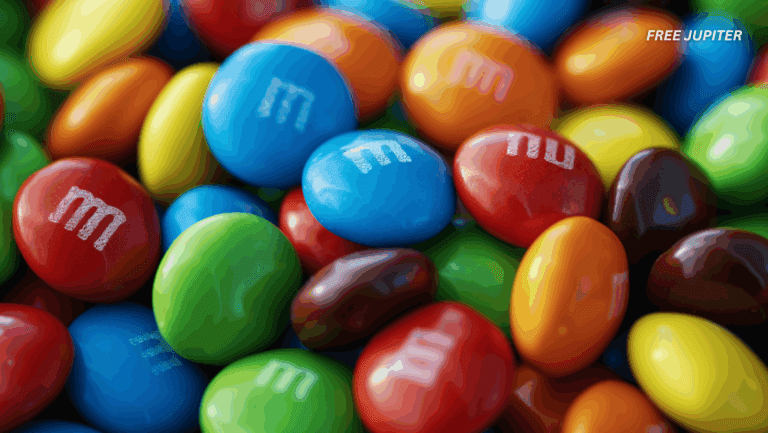We’ve all heard the mantra since childhood: drink milk for strong bones! While dairy is a well-known source of calcium, it’s not the only way to meet your daily needs. Calcium is essential for nerve function, muscle contraction, hormone regulation, and keeping those bones sturdy. The National Institutes of Health (NIH) notes that approximately 98% of the body’s calcium is stored in our bones, highlighting its importance.
Many believe they’re getting enough of this vital mineral, but according to Isabel Maples, M.Ed., R.D.N., a spokesperson for the Academy of Nutrition and Dietetics, most Americans, particularly teens, women over 50, and men over 70, fall short. Calcium, along with vitamin D, potassium, and fiber, is one of the top nutrients lacking in the average American diet. So, how can you ensure you’re getting enough?
Most adults require 1,000 to 1,200 milligrams of calcium daily, with teens and pregnant or lactating individuals needing even more. If you avoid dairy, fear not! Katherine Zeratsky, R.D.N., a clinical dietitian at Mayo Clinic, assures us that many foods are excellent calcium sources. Checking nutrition labels is key. A “good source” of calcium provides 10 to 19 percent of the recommended daily value, while an “excellent source” offers 20 percent or more.
Ready to boost your calcium intake? Here are some surprising and tasty options to consider:
1.Kale
Kale is a nutrient-dense leafy green that shines as a calcium source. One cooked cup (about 118 grams) provides approximately 179 mg of calcium-comparable to a glass of milk. Beyond calcium, kale is rich in vitamins A, C, and K, antioxidants, and fiber, all of which contribute to overall health. Its calcium is highly bioavailable, meaning your body absorbs it efficiently. Enjoy kale steamed, sautéed, or blended into smoothies.
2. Yogurt
Yogurt is a calcium superstar in the dairy world. A single 8-ounce cup of plain, low-fat yogurt delivers between 300 and 450 mg of calcium, covering roughly 30-45% of the daily recommended intake for adults. It also provides beneficial probiotics that support gut health and protein that aids muscle repair. Opting for plain yogurt avoids added sugars, and you can sweeten it naturally with fresh fruit or honey.
3. Bok Choy
This mild, crunchy Chinese cabbage offers about 160 mg of calcium per cooked cup. Bok choy is also a good source of vitamins A, C, and K, potassium, and fiber. Its calcium is well absorbed, making it an excellent plant-based option. Add bok choy to stir-fries, soups, or steam it as a side dish.
Read more: 9 Weird Ways Your Body Is Screaming for More Magnesium
4. Kefir
Kefir is a fermented milk drink similar to yogurt but with a thinner consistency and a tangy flavor. One cup of plain, low-fat kefir contains around 104 mg of calcium. It’s rich in probiotics, which promote digestive health and may enhance calcium absorption. Enjoy kefir as a beverage, in smoothies, or as a base for salad dressings.
5. Broccoli
Broccoli is a versatile vegetable that provides between 60 and 180 mg of calcium per cooked cup, depending on preparation. It is also packed with vitamins C and K, fiber, and antioxidants. Broccoli supports bone health not only through calcium but also by providing vitamin K, which plays a role in bone metabolism. Steam, roast, or add it raw to salads.
6. Canned Seafood (with Bones)
Canned sardines and salmon are calcium goldmines because their edible bones are rich in this mineral. Three ounces of canned sardines provide between 325 and 370 mg of calcium, while the same amount of canned salmon offers 170 to 210 mg. These fish are also excellent sources of omega-3 fatty acids and vitamin D, which enhances calcium absorption. Incorporate them into salads, pastas, or eat straight from the can.
7. Hard Cheese
Hard cheeses like cheddar, Parmesan, Swiss, and Gruyere are concentrated calcium sources. For example, 1.5 ounces of cheddar cheese contains about 307 mg of calcium, while a tablespoon of grated Parmesan offers approximately 70 mg. Swiss and Gruyere cheeses provide around 270 mg per ounce. These cheeses also supply protein and fat, making them satiating additions to meals. Use them in cooking, on sandwiches, or as snacks.
8. Turnip Greens
Turnip greens are leafy vegetables packed with nutrients. One cooked cup delivers about 200 mg of calcium, along with vitamins A, C, and K, and fiber. Their calcium is well absorbed, making them a valuable plant-based source. Enjoy turnip greens steamed, sautéed, or added to soups.
9. Cottage Cheese
Cottage cheese is a soft, fresh cheese that provides a moderate amount of calcium. A half-cup serving of 2% cottage cheese contains approximately 65 to 105 mg of calcium. It’s also high in protein, which supports muscle maintenance. Cottage cheese can be eaten on its own, with fruit, or used in recipes like lasagna.
Read more: What Happens To Your Body When You Eat Cottage Cheese Every Day
10. Oranges
A whole orange contains about 55 to 65 mg of calcium and is an excellent source of vitamin C, which supports bone health by aiding collagen formation. Fortified orange juice can offer much more calcium-up to 300 mg per cup-making it a convenient option. Enjoy fresh oranges as snacks or juice fortified varieties for an extra boost.
11. Eggnog
This creamy holiday beverage contains roughly 250 to 300 mg of calcium per cup. While it’s seasonal and often high in sugar and fat, eggnog can contribute to calcium intake when consumed in moderation.
12. Seeds
Certain seeds, particularly chia and sesame seeds, are calcium-rich. Chia seeds provide about 179 mg of calcium per ounce (28 grams), along with fiber and omega-3 fatty acids. Sesame seeds are even more concentrated, offering approximately 825 mg per 100 grams. These seeds also contain boron, a trace mineral that supports bone and muscle health. Sprinkle seeds on yogurt, salads, or blend into smoothies.
13. Collard Greens
Collard greens are another leafy green packed with calcium, providing about 50 to 266 mg per cooked cup. They also supply fiber, vitamins A, C, and K, and antioxidants. Collards can be steamed, sautéed, or added to soups and stews.
14. Almonds
Almonds offer about 80 mg of calcium per one-ounce (28 grams) serving, along with healthy fats, protein, and vitamin E. They make a nutritious snack or topping for oatmeal and salads. Almond butter is another tasty way to enjoy almonds’ benefits.
15. Ice Cream
While not a health food, ice cream does contain calcium. A half-cup serving of vanilla ice cream provides roughly 100 mg of calcium. Enjoy it occasionally as a treat, but don’t rely on it as a primary calcium source due to sugar and fat content.
16. Tofu (Calcium-Set)
Tofu made with calcium sulfate is an excellent calcium source. Four ounces (about 113 grams) can contain between 250 and 750 mg of calcium, depending on the brand and preparation. Tofu is also a good source of protein and iron. Use it in stir-fries, soups, or grilled dishes.
17. Almond Milk (Fortified)
Many almond milk products are fortified with calcium to match or exceed dairy milk’s content. One cup typically contains between 300 and 450 mg of calcium. Almond milk is a popular dairy alternative, low in calories and lactose-free. Use it in cereals, smoothies, or coffee.
18. White Beans
White beans provide about 70 mg of calcium per half-cup cooked serving. They are also rich in fiber, protein, and iron. White beans can be added to soups, salads, or mashed as a side dish.
19. Ricotta Cheese
Ricotta cheese is creamy and mild, with about 335 mg of calcium per four-ounce serving. It’s often used in Italian dishes like lasagna or enjoyed in desserts. Ricotta also supplies protein and phosphorus, which supports bone health.
20. Rhubarb
This tart vegetable contains roughly 348 mg of calcium per cooked cup. However, rhubarb also contains oxalates, which can reduce calcium absorption, so it’s best consumed as part of a varied diet. Rhubarb is commonly used in pies, jams, and desserts.
Read more: 8 Everyday Drinks That Are Surprisingly High in Magnesium
21. Fortified Frozen Waffles
Some frozen waffles are fortified with calcium, providing a convenient way to increase intake. Depending on the brand, a serving can offer 100 to 200 mg of calcium. Check labels for fortification details.
22. Figs
Dried figs are a sweet, calcium-rich snack. Five dried figs provide about 135 mg of calcium. They also contain fiber, potassium, and antioxidants. Enjoy figs as snacks or chopped into salads and baked goods.
23. Whey Protein Powder
Some whey protein powders include added calcium, making them a dual source of protein and calcium. The calcium content varies widely, from 100 to 300 mg per serving. Whey protein is popular among athletes and those seeking to supplement protein intake.
24. Soy Milk (Fortified)
Fortified soy milk typically contains about 240 to 300 mg of calcium per cup. It is a popular plant-based milk alternative, rich in protein and often fortified with vitamin D and B12. Use soy milk as a substitute for dairy milk in cooking and beverages.
25. Orange Juice (Fortified)
Calcium-fortified orange juice can provide up to 375 mg of calcium per 6-ounce glass, making it an excellent option for those who don’t consume dairy. It also provides vitamin C, which supports calcium absorption.
26. Canned Tomatoes
While not a major calcium source, canned tomatoes contribute small amounts (around 20 mg per half-cup) and add flavor and nutrients like lycopene and vitamin C to meals.
27. Black Beans
Black beans offer about 46 mg of calcium per half-cup cooked serving. They are also rich in fiber, protein, and antioxidants. Add black beans to salads, soups, or as a side dish.
28. Butternut Squash
Butternut squash contains modest calcium levels-about 84 mg per cooked cup-and is rich in vitamins A and C. It’s a versatile vegetable that can be roasted, mashed, or added to soups.
29. Okra
Okra provides approximately 82 mg of calcium per cooked cup. It also contains fiber, vitamins C and K, and antioxidants. Okra is popular in stews, fried dishes, and as a side vegetable.
30. Garbanzo Beans (Chickpeas)
Chickpeas offer around 80 mg of calcium per cooked cup. They are a good source of protein, fiber, and several minerals. Use chickpeas in salads, hummus, or roasted as a snack.
31. Rice Milk (Fortified)
Fortified rice milk generally contains about 22 to 30 mg of calcium per cup, less than other fortified plant milks but still a helpful addition for those avoiding dairy and soy. It’s often enriched with vitamins A and D.
32. Amaranth
Amaranth is an ancient grain providing about 135 mg of calcium per half-cup cooked serving. It’s also rich in protein, fiber, and other minerals like magnesium and iron. Use it as a cereal, side dish, or in baking.
33. Edamame
These young soybeans contain about 60 mg of calcium per half-cup cooked serving. Edamame is also rich in protein, fiber, and folate. Enjoy steamed edamame as a snack or added to salads and stir-fries.
34. Powdered Milk
Powdered milk is a concentrated calcium source, with about 300 mg of calcium per five tablespoons reconstituted. It’s convenient for cooking and baking, allowing you to boost calcium content in recipes.
35. Fortified English Muffin
Some English muffins are fortified with calcium, providing approximately 100 to 200 mg per muffin. Check packaging to find brands with added calcium for an easy breakfast boost.
36. Fortified Cereals
Many breakfast cereals are fortified with calcium and can provide anywhere from 100 to over 1,000 mg per serving. Fortified cereals can be an excellent way to start the day with a calcium boost, especially when paired with fortified milk or plant-based milk alternatives.
Read more: The Kind of Protein You Need To Help You Live Longer: Study
37. Ultra-Filtered Milk
Ultra-filtered milk undergoes a filtration process that concentrates protein and calcium while reducing sugar content. This milk can contain up to 400 mg of calcium per cup, making it a nutrient-dense dairy option. It’s creamy and often used in cooking or as a beverage.
Final Thoughts: A Calcium-Rich Plate is Within Reach
Calcium is essential for lifelong health, and fortunately, it’s found in a wide variety of foods beyond just milk. By incorporating leafy greens, dairy, seafood, nuts, seeds, legumes, fortified products, and even some fruits and vegetables, you can easily meet your daily calcium needs. Whether you prefer plant-based options, dairy, or a mix of both, a calcium-rich diet supports strong bones, muscle function, and overall wellness.
Remember to pair calcium intake with adequate vitamin D and maintain a balanced diet for optimal absorption. Spread your calcium consumption throughout the day, and enjoy the diverse flavors and textures these foods bring to your table.
If you’d like, I can also help you create sample meal plans or recipes featuring these calcium-rich foods!










